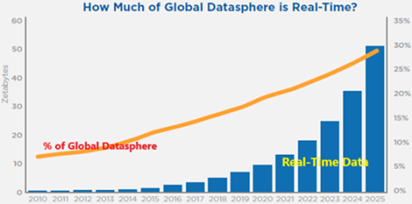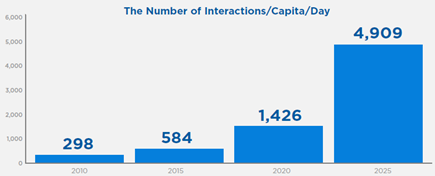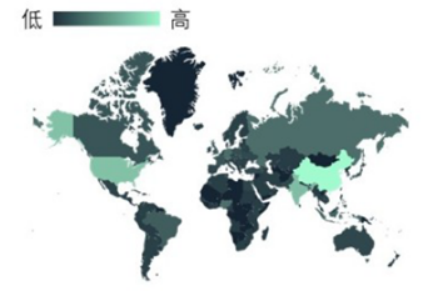

Recently, some friends asked “Jesse, why you start to participate in TSDB at this moment? Is this a good timing?” Good question–because no matter how smart an individual is, he or she is still no match for a team; and no matter how good a team is, it still needs to follow the trend. Actually, we've been thinking about “Why Now”, so let's just talk about it.
This article is only a personal opinion, please bear with meif there is any bias
🤠🤠🤠
Time Series Databases is on the rise
Opportune Time: Big data explosion, real-time data processing demand soars


Among these newly generated data, we found that real-time data accounted for the majority. According to IDC forecast, by 2025, there will be more than 150 billion devices connected worldwide, most of which will continue to create real-time data. For example, in industrial production, the equipment in the manufacturing workshop needs to rely on real-time data for process control and improvement. Meanwhile, each internet user in the world will perform digital data interaction for more than 4,900 times a day on average — that’s roughly 1 digital interaction every 18 seconds. We can say that the era of Internet of Everything driven by IoT is coming. Real-time data accounted for 15% of the global data volume in 2017, and will increase to 30% in 2025.




Geographical Advantage: The world's largest and most complex application scenario is in China.
China has the largest mobile Internet application scene


Talent: Increasing supply of open source talents in China
We have discovered that more and more Chinese technology giants are investing in the construction of the open source ecosystem. According to the 2020 global open source vendor GitHub open source contributions released by the Open Source Contributor Index, Huawei has entered the top ten in the global list, up 17 places from 2019. In 2020, Huawei has 1,683 contributors on GitHub, an increase of 55.3% over last year. In addition to Huawei, Internet companies such as Ali and Tencent have also increased their investment in open source basic software. As of September 2021, Alibaba has over 2,700 external open source projects. Among them, Alibaba will add 732 new open source projects in 2020, and the annual growth rate of open source projects will reach 27.1%.
We believe that more and more major Internet companies are participating in open source, providing us with more talent supply. It's not that there is no excellent IT talent in China, but just that most of them chose front-end application development before. Now the things have changed. GitHub also expects most of its contributors by 2030 May come from China.
GitHub Predicts Hot Country Distribution of Contributors by 2030


The general trend of time made us determined to build TSDB. I believe that CnosDB will overcome all difficulties to welcome the era of Internet of Everything. Finally, forgive me for adverting that if you have dream and ability, the door of CnosDB will always be open to you. Welcome to join us. That's all, see you next time.
